
Having a canted smile can keep you from reaching your full aesthetic potential. You might be the only one who notices it, or it might be obvious to everyone in every picture, but there’s no downside to fixing it.
If an uneven gum line causes your canted smile, laser gum recontouring can correct it. If you have jaw misalignment with uneven teeth, then braces could help you. In more severe cases, you’ll need orthognathic surgery.
What Causes a Canted Smile?
It is crucial to know what caused your canted smile to know how to correct it. There are different methods to fix a canted smile, so knowing the cause will help you and an orthodontist choose the best treatment plan.
Jaw Misalignment
Jaw misalignment or malocclusion can make your smile uneven. It can affect the symmetry of your teeth, lips, or both.
There are many kinds of jaw misalignment, and some examples include overbite, overjet, crossbite, etc. Trauma, birth defects, small palates, etc. can also cause a misaligned jaw. For more info on malocclusions, check out this Looks Theory episode:
Misaligned Teeth
Misaligned teeth can make your smile look uneven. Misaligned teeth can be uneven in length, crooked, etc. They can be from many issues, such as gingivitis, small palates, injuries, excessive pressure on the gums and teeth, etc.
Uneven Gum Line
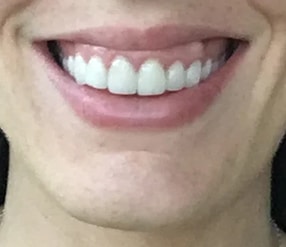
Your gum tissue keeps your teeth in place. However, the gum tissue can drop lower on one side, causing an uneven look.
An incomplete eruption of teeth can be the cause of an uneven gum line. The gums naturally withdraw when teeth emerge to leave the tooth exposed. If the gums do not correctly withdraw, it can make your smile uneven.
Receding gums can make your gumline uneven. Gingivitis, brushing too hard, age, etc. can make your gums recede.
Injuries
Of course, injuries can make your smile asymmetrical. Trauma can affect the way your teeth, gums, and lips look. Depending on the extent of the damage, you may need orthodontic treatment or surgery to correct a canted smile.
How to Fix a Canted Smile
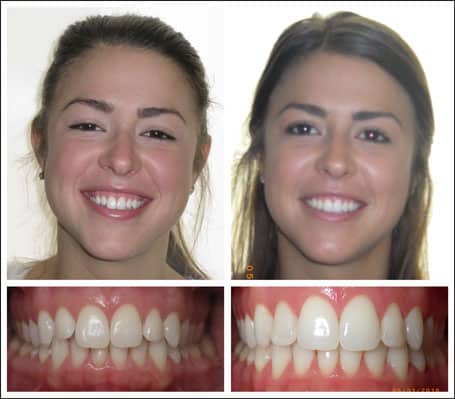
The best way to correct a canted smile is to consult an orthodontist or a plastic surgeon. Here are several ways you can fix an uneven smile.
Gum Contouring
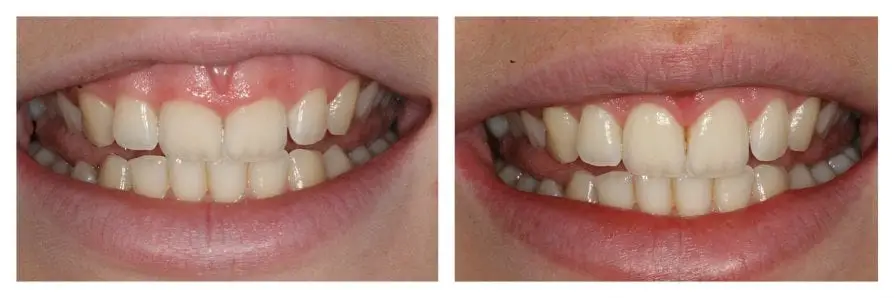
Gum contouring or a smile lift can correct an asymmetrical smile if you have an uneven gum line. Gum contouring procedures involve reshaping the gingival margins and removing extra gum tissue to create a more even gum line.
Some orthodontists may use a soft diode laser to complete this treatment. It can reshape the gum tissue gently without needing a scalpel.
A laser can decrease your risk of infection. Additionally, using a laser for the treatment can create less discomfort and bleeding. Most patients will only need local anesthesia because there will be no cutting.
Crown Lengthening

Crown lengthening is generally for overly gummy smiles. In some instances, excessively gummy smiles can make your smile look uneven, and crown lengthening can help.
The crown is the visible part of the tooth above the gumline. Crown lengthening exposes more tooth structure. The procedure can help reveal more teeth and make your gum line even to correct a canted smile.
Some people confuse the difference between crown lengthening and gum contouring. The main difference is that gum contouring only recontours the gum, whereas crown lengthening recontours the supporting bone and gum.
Veneers

Some patients can get a better smile with veneers. Veneers are usually porcelain and can significantly benefit the visual appearance of your teeth.
Veneers get specially made for most patients. A veneer will be put over the tooth you want to correct. It can protect the existing tooth while improving the overall appearance.
Veneers can correct a canted smile because your teeth can grow unevenly. For instance, one upper incisor might be shorter than the other. Therefore, an orthodontist can place a porcelain veneer on the shorter tooth to create a more even smile.
Braces
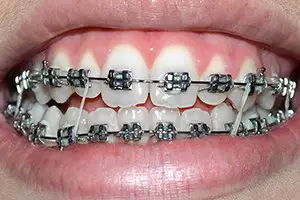
Braces can help fix a misaligned jaw to correct a canted smile. Braces can pull your teeth and jawbone into the right places, enhancing your smile’s symmetry.
Plus, braces can straighten crooked teeth. Therefore, you can correct your bite and jaw alignment while enhancing your overall smile.
What kind of braces you can get will depend on your case. For instance, you can get Invisalign if you want a more discreet option. However, Invisalign may not be able to fix severe misalignment or extremely crooked teeth.
Most patients will get retainers after they get braces. An orthodontist will tell you how often you should wear it. Typically, most orthodontists will say to wear it while you sleep to avoid shifting teeth.
Tooth Extraction
If you have severely overcrowded teeth, then your smile can be uneven. Removing some teeth in strategic areas can help treat the malocclusion and enhance your jaw alignment, creating an even smile.
But make sure this is only done after you’re an adult, as tooth extractions can negatively affect craniofacial development in children.
Palate Expanders
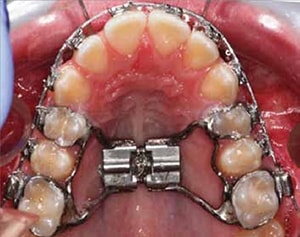
In some cases, you may need a palate expander to correct your bite. You may get this before or after getting other orthodontic treatments like braces.
As mentioned earlier, tooth extraction can help treat issues like crowding. However, palate expanders can be another great way to treat crowding and crossbites. A study shows that all children corrected their crossbites with palatal expansion (Ferrario et al., 2003). This is preferable because you’re fixing the core issue as well as other aesthetics problems.
A palate expander is an orthodontic device that an orthodontist will insert into your palate. Depending on your case, you can put the palate expander into your mouth by yourself or have it surgically placed there.
A palate expander works by slowly pulling your two palate halves apart by the suture. While it sounds painful, it happens slowly, so you may only experience discomfort during the first week.
Most patients will wear palate expanders for 6-12 months. You may get your desired palate size after 3-6 months, and you may have to wear the palate expander for 6-12 months to let new bone develop in the suture. That way, you will keep your new size.
A palate expander will create more room on your palate and more space for your teeth. When there is more space for your teeth, braces can shift them back into place. Your smile can be significantly more even once the treatment is over.
Combined Treatments
Some patients may need a combination of the treatments listed above or other procedures to correct a canted smile. Some people call this a smile makeover.
A combination of treatments can help you get the best results. For instance, you may get a palate expander, braces, then gum contouring as part of your treatment plan.
If you’re a kid and still growing, I suggest checking out mewing, as it might be able to fix your issues without surgery, which you should wait to get until you’re an adult anyway.


